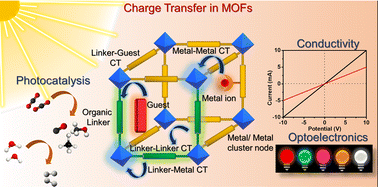Charge transfer in metal–organic frameworks
Abstract
Metal–organic frameworks (MOFs, also known as porous coordination polymers or PCPs) are a novel class of crystalline porous material. The tailorable porous structure, in terms of size, geometry and function, has attracted the attention of researchers across all disciplines of materials science. One of the many exciting aspects of MOFs is that through directional and reversible coordination bonding, organic linkers (chromophores with metal-coordinating functional groups) and metal ions (and clusters) can be spatially organized in a preconceived geometry. The well-defined spatial geometry of the metals and linkers is very advantageous for optoelectronic functions (solar cells, light-emitting diodes, photocatalysts) of the materials. This feature article evaluates the scope of charge transfer (CT) interactions in MOFs, involving the organic linkers and metal ion or cluster components. Irrespective of the type (size, shape, electronic property) of organic chromophores involved, MOFs provide an insightful path to design and make the CT process efficient. The selected examples of MOFs with CT characteristics do not only illustrate the design principles but render a pathway towards understanding the complex photophysical processes and implementing those for future optoelectronic and catalytic applications.

- This article is part of the themed collection: Celebrating 10 years of ChemComm Emerging Investigators


 Please wait while we load your content...
Please wait while we load your content...